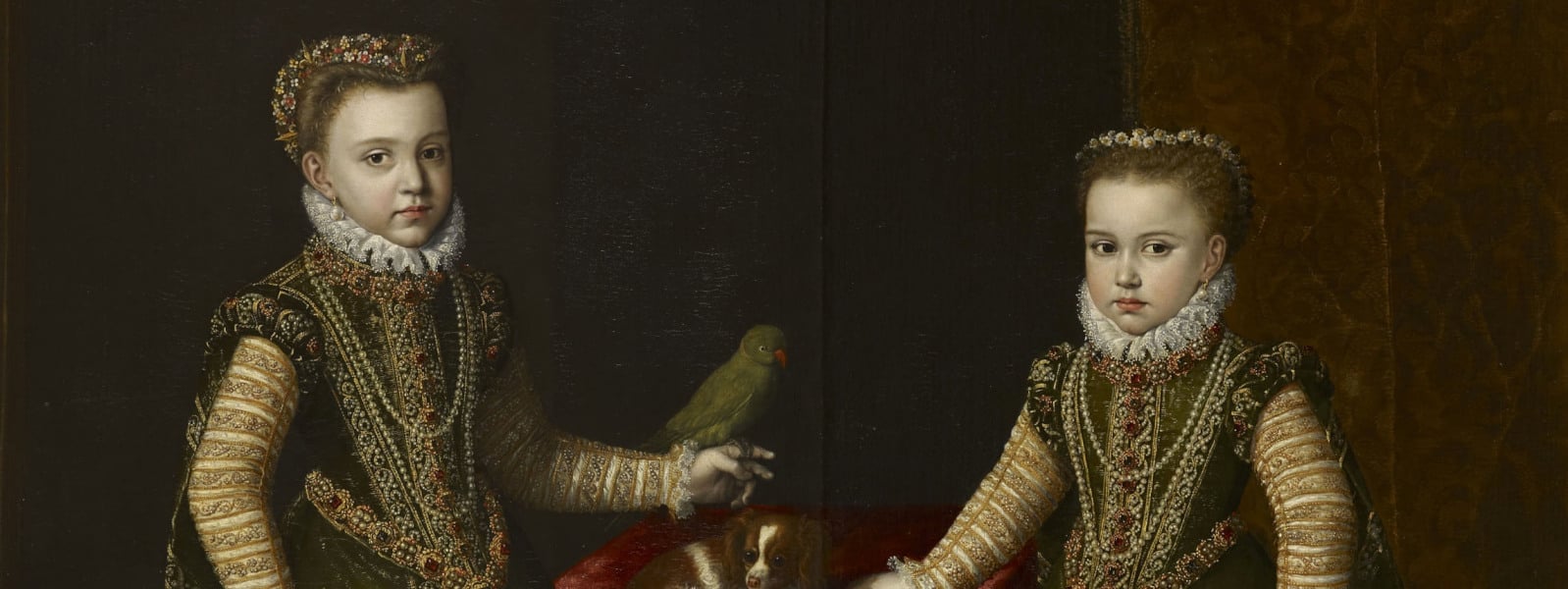Spanish paintings in the Royal Collection
From the 18th century, the Spanish school began to be appreciated in England

The long relationship between the English and Spanish royal families dates back to the sixteenth century, and has enriched the Royal Collection with a number of significant Spanish paintings. Isabella of Castille and Ferdinand of Aragon, whose portraits were some of the earliest Spanish paintings to come to Britain, were the parents of Catherine of Aragon. It is possible that she brought their portraits with her when she came to marry Henry VIII in 1509. Other works came into the Royal Collection during the Stuart reign. For example, Juan Pantoja de la Cruz’s Margaret of Austria was given as a gift to James I following a peace treaty between England and Spain in 1605. Charles I famously travelled incognito to Spain when Prince of Wales, to win the hand of Philip IV’s sister. Whilst his romantic mission was unsuccessful, his time at the Spanish Court undoubtedly shaped his artistic tastes and the future King was supposedly painted by Diego Velázquez whilst in Madrid, although the work was later lost.
Although Spanish paintings were acquired for the Collection during the sixteenth and seventeenth centuries, it was not until the eighteenth century that the Spanish school became more widely appreciated in Britain. A growth of interest in Spanish art amongst aristocratic collectors was the result of increased travel to Spain where British visitors could see the works of artists such as Velázquez and Bartolomé Esteban Murillo for themselves. British collectors subsequently prized these two artists above all other Spanish painters.
During the nineteenth century, the European art market was flooded with Spanish paintings due to two key events. The Peninsula War, during which Napoleon invaded Spain, led to the seizure of a number of Spanish paintings, which were taken back to France or sold abroad. The Duke of Wellington was gifted several Spanish pictures after successfully defeating Napoleon in 1814. These were brought back to Britain, generating further interest in Spanish art. In 1853 the sale of Louis Phillipe, King of France’s collection caused another influx of paintings to the art market. Louis Phillippe’s Spanish collection, which originally hung in the Galerie Espagnole in the Louvre, spanned a large chronological period and included works by artists such as Murillo, Velázquez, Zurbaran and Ribera. Queen Victoria bought a number of paintings from the sale and hung them together in what came to be known as the Spanish Bedroom in Buckingham Palace, perhaps in honour of Louis Phillippe’s original display. These paintings are good examples of Spanish Golden Age portraiture, showing sitters in the richly embroidered costumes worn by the Hapsburg Court, standing or sitting in rigid formal positions typical of portraiture at this time. These portraits convey the importance of political status and power.
By the mid-nineteenth century, a large number of important private and public collections had significant numbers of Spanish paintings on display and these works influenced British artists such as Sir David Wilkie, who painted a number of Spanish-inspired genre scenes. The influence of Catholicism on Spanish art made some British critics sceptical due to the large anti-Catholic sentiment in Britain at this time. Those who expressed appreciation for Spanish paintings tended to focus on the tonality and vibrancy of these paintings rather than the religious sentiment, lauding the hand of the artist and the process of making a painting but not the message.







